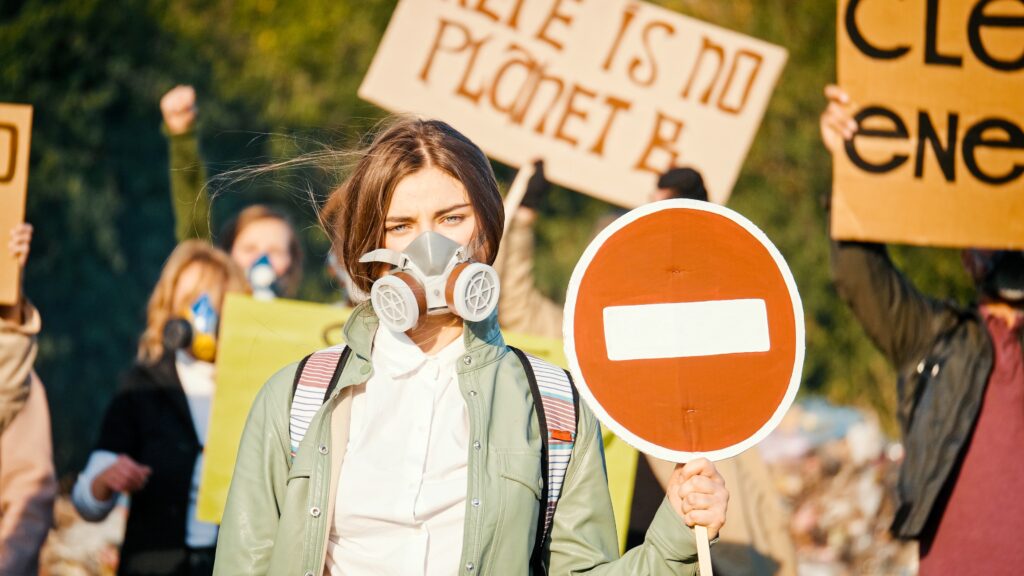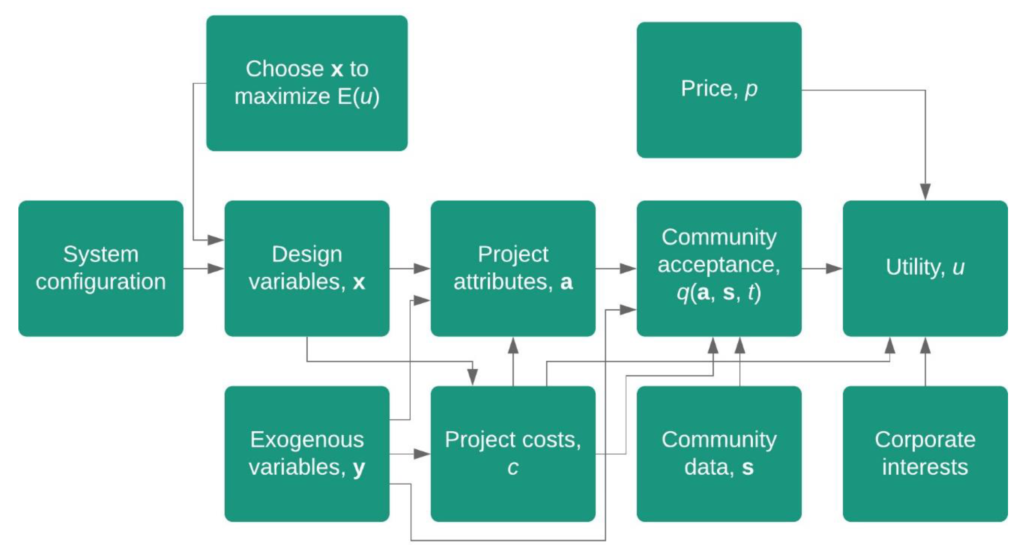
Social and political risks are top on the minds of mining leaders these days. For example, the 2022 Ernst & Young annual review of risks and opportunities in the global mining and metals sector ranks “environmental and social” as the top risk or opportunity and “social license to operate” as the Number 4. Social license to operate was Number 1 for the last three years. Because of this concern around social risks, mining engineers have been under increasing pressure to consider social risks in developing plans for mines. However, there are very few tools that mining engineers can use to help them design mines that take social risks into consideration. In the last few years, the Mine Sustainability Modeling Research Group has been doing research to make that possible. We recently published a paper that outlines how one could use some of that research to actually evaluate design alternatives for the social risks.
Engineering design involves generating design alternatives and evaluating these alternatives against the design objectives to select the optimal design alternatives. In order for engineers to drive the design towards a particular objective, they need tools to evaluate how the attributes of the design affect the design objective. Mining engineers do this when they look at a deposit and design how the deposit will be extracted. For instance, mining engineers need a tool that can connect the slope angle of a surface mine pit to the economics (present value) of the pit (i.e., the graph-based optimization of Lerchs-Grossman to determine the pit outline that maximizes the present value given the slope and other parameters). Without such tools, engineers rely on subjective measures to evaluate the relationship between the attributes of the design alternative and the design objective in question.
For social risks, this is very challenging. There are no easy ways to determine how the design decisions made during mine planning affect social risks. Thus, mine engineers often do their best to come up with plans that they think are acceptable to host communities, only to find that there is social unrest about certain aspects of the design. At that point, it is often too late to fix the design as trust is already broken and the company’s social license often takes a hit.
In the last few years, Dr. Sisi Que has done a lot of work on attributes of mining project that influence individual preferences for mineral projects.1-3 Using discrete choice theory, Dr. Que has examined the relative importance of several key attributes of mineral projects in explaining individual preferences for mining projects. She (with her collaborators) has even examined how the relative importance of these attributes change across cultures (examining their relative importance with US, Turkish, and Chinese study participants).2 One of the benefits using discrete choice theory, is that Dr. Que’s models can be used to estimate probabilities of whether an individual will prefer this or that alternative.
In 2021, several members of the Mine Sustainability Modeling Group collaborated on a paper where we included the discrete choice models into mine planning to directly assess social risks associated with a particular mine production sequence.4 Our work builds on previous work by Wassenaar and colleagues that included discrete choice models in decision-based design.5 We adapted this approach for mine planning when one wants to incorporate social risks (see figure). Using this approach, we are able to combine our discrete choice modeling work with traditional mine planning tools (in this case, we used WhittleTM to generate alternatives for mine development) that can generate mine development alternatives to evaluate the social risk of each alternative. A mine engineer can then select the optimal alternative by appropriately incorporating social risk into the decision. You can read the full paper for free at the publisher’s website (the paper is open access).

Our hope is that this is a first step towards more tools like these. That mine engineers will have several tools available that can better incorporate social risk into mine planning. If you are interested in working with our group to advance this work, get in touch.
References
- Que, S., Awuah-Offei, K., Wang, L., Samaranayake, V. A., Weidner, N., & Yuan, S. (2018). Individual preferences for mineral resource development: Perspectives from an urban population in the United States. Journal of Cleaner Production, 189, 30-39.
- Que, S., Awuah-Offei, K., Demirel, A., Wang, L., Demirel, N., & Chen, Y. (2019). Comparative study of factors affecting public acceptance of mining projects: Evidence from USA, China and Turkey. Journal of Cleaner Production, 237, 117634.
- Que, S., Awuah-Offei, K., Jiang, H., & Ding, Z. (2021). Individual preferences for mineral resource development: A cross-cultural case study of urban dwellers. The Extractive Industries and Society, 8(4), 100987.
- Awuah-Offei, K., Que, S., & Ur Rehman, A. (2021). Evaluating Mine Design Alternatives for Social Risks Using Discrete Choice Analysis. Sustainability, 13(16), 8700.
- Wassenaar, H. J., Chen, W., Cheng, J., & Sudjianto, A. (2005). Enhancing discrete choice demand modeling for decision-based design. Journal of Mechanical Design, 127(4), 514-523